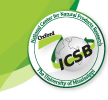Document Type
Oral Presentation
Location
Oxford Convention Center, 102 Ed Perry Boulevard Oxford, MS 38655
Event Website
https://oxfordicsb.org/
Start Date
15-4-2024 3:00 PM
End Date
15-4-2024 3:15 PM
Description
Introduction Sleep is an important foundation of health, yet the U.S. Centers for Disease Control (CDC) notes that about 30% of adults to not get the recommended minimum of 7 hours’ sleep per night. Prescription treatments may help, but they carry risks such as side-effects, dependency, and medication interaction. Natural botanical extracts are a therapeutic possibility for improving sleep quality, but additional research is needed on their efficacy and safety. A system of natural products based on lavender was developed and tested in a human clinical study to evaluate effect on sleep, blood and safety markers, and gene expression modulation after six weeks of use. Materials and Methods A single-blind, progressive study was carried out in 42 healthy participants, males and females, ages 35-50. Following baseline sample collection, three lavender-based products (an essential oil blend for diffusion, a solid stick for topical application, and a supplement for internal consumption) were added sequentially and participants were monitored for efficacy and safety. Participants wore fitness trackers and filled out weekly surveys detailing their experience. Sample collection was repeated at the end of six weeks. Results Fitness tracker data showed that the amount of sleep for participants using the product system was not significantly increased (about 10 additional minutes). However, subjective surveys suggested that the quality of sleep and the perception of wellbeing improved when participants were using the lavender-based products. Gene expression analysis revealed more than 90 genes that were significantly up- or down-regulated as participants used the product system. Many were related to cellular processes, and several had potentially direct ties to circadian rhythms and sleep pathways (ZMIZ2, LRP5, and DNMT3B). Differential expression was noted between study participants whose sleep patterns were regular versus participants who got similar amounts of sleep bu
Recommended Citation
Stevens, Nicole, "Chemistry, biology, and safety of volatile organics from aromatic and medicinal plants" (2024). Oxford ICSB. 10.
https://egrove.olemiss.edu/icsb/2024_ICSB/Schedule/10
Publication Date
April 2024
Accessibility Status
Searchable text
Included in
Chemistry, biology, and safety of volatile organics from aromatic and medicinal plants
Oxford Convention Center, 102 Ed Perry Boulevard Oxford, MS 38655
Introduction Sleep is an important foundation of health, yet the U.S. Centers for Disease Control (CDC) notes that about 30% of adults to not get the recommended minimum of 7 hours’ sleep per night. Prescription treatments may help, but they carry risks such as side-effects, dependency, and medication interaction. Natural botanical extracts are a therapeutic possibility for improving sleep quality, but additional research is needed on their efficacy and safety. A system of natural products based on lavender was developed and tested in a human clinical study to evaluate effect on sleep, blood and safety markers, and gene expression modulation after six weeks of use. Materials and Methods A single-blind, progressive study was carried out in 42 healthy participants, males and females, ages 35-50. Following baseline sample collection, three lavender-based products (an essential oil blend for diffusion, a solid stick for topical application, and a supplement for internal consumption) were added sequentially and participants were monitored for efficacy and safety. Participants wore fitness trackers and filled out weekly surveys detailing their experience. Sample collection was repeated at the end of six weeks. Results Fitness tracker data showed that the amount of sleep for participants using the product system was not significantly increased (about 10 additional minutes). However, subjective surveys suggested that the quality of sleep and the perception of wellbeing improved when participants were using the lavender-based products. Gene expression analysis revealed more than 90 genes that were significantly up- or down-regulated as participants used the product system. Many were related to cellular processes, and several had potentially direct ties to circadian rhythms and sleep pathways (ZMIZ2, LRP5, and DNMT3B). Differential expression was noted between study participants whose sleep patterns were regular versus participants who got similar amounts of sleep bu
https://egrove.olemiss.edu/icsb/2024_ICSB/Schedule/10


